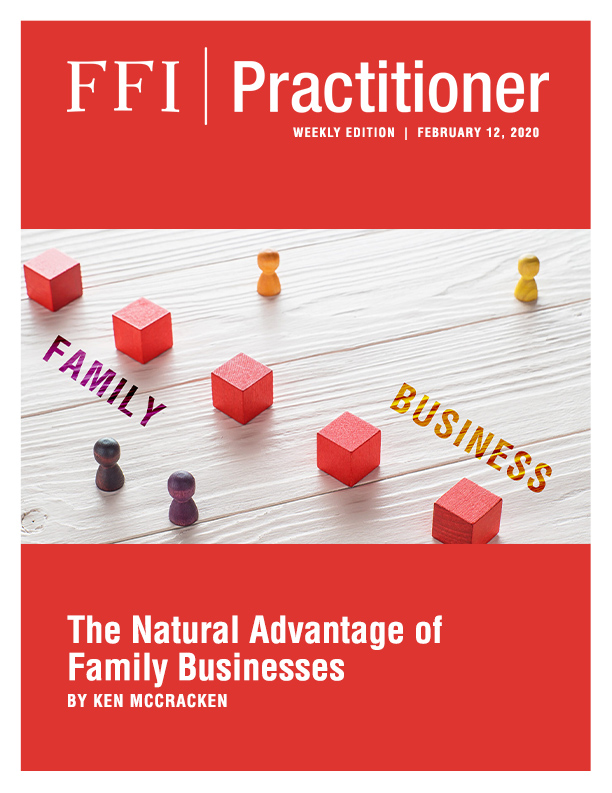
Family businesses naturally aspire to achieve a balance among various interests as classically explained in the Three Circle Model (the stakeholders being those involved in the business, ownership, and family).1 The desire for equilibrium is not an articulated vision, mission, or purpose, but rather a desired state because it enables stakeholders to co-exist and pursue their versions of success through the family business with as few distractions as possible.
The alternative to the argument that equilibrium is a preferred state for family businesses would be that some family business systems aspire to maintain continual chaos. While many family businesses occasionally must address chaotic events, not many deliberately seek chaos as a constant state because neither the family nor its business can tolerate it for extended periods.
Natural governance in a family business is predominantly based on boundaries. For example, answers to questions like, ‘Who is family for the purpose of owning shares?’ or ‘Who is the family for the purpose of getting a job in the business?’ or ‘Who is the family for coming to dinner on Saturday?’ indicate how a family establishes various boundaries in relation to ownership, employment, and social life.
The important boundary between family and business life might be expressed as, ‘We don’t discuss business during family time’ or, ‘We don’t discuss family matters in the boardroom.’ These statements reflect an attempt to segment the domains of family and business in pursuit of a family’s idea of how to balance these competing interests.
Boundary setting is often a random activity, meaning that the boundaries can be slightly vague. This ambiguity may tempt some individuals to ignore or reshape boundaries in pursuit of their vested interests, such as raising a family issue in the boardroom. Others, however, will attempt to police the boundaries and, in this example, they might retort, ‘Remember, we don’t discuss family matters in the boardroom.’
The ongoing process of monitoring, reshaping, and shifting boundaries is an organic characteristic of natural governance. Throughout, stakeholders are constantly striving to achieve an overall equilibrium among competing interests that enable life to go on at a tolerable level of anxiety.
as possible.”
For example, some siblings and other family groups run successful businesses by operating in silos. In a family manufacturing business, this could be reflected by separate family members in charge of production, sales, and finance. Provided there is some distance between the individuals and direct communication is kept to a minimum, the business thrives through family members managing their respective silos without much interference from the others.
In this example, the family effectively resolves the anxiety of working together by simply staying out of each other’s way. Suggesting that they should hold more formal board meetings because this management practice is considered to be “normal” is practically useless given that the family clearly prefers to avoid this type of interaction. The amount of time and worry that would be invested in holding formal meetings could, in fact, turn out to be damaging to the existing form of overall governance.
Sidebar
Boundaries, informal decision-making structures, and an aligned set of values are three of the four elements constituting natural governance. These elements interact and generate a set of understandings, assumptions, and expectations that is sometimes summarized as, “How we do things around here.’
The final element is the roles that people perform in order to maintain the overall equilibrium achieved through natural governance.
Nor is natural governance static. It must continually evolve in order to cope with constant changes happening inside and outside of the family and the business. Examples could include individual family members aging, entering into or leaving relationships, joining or retiring from the business, and sharing the responsibilities of ownership. Therefore, natural governance is dynamic and adapts as the needs or expectations of a family and its business develop over time.

If advisors want to help a family business with the challenge of governance, the first challenge must be to understand what the client is already doing naturally. A new system of governance will involve changing established boundaries, decision-making structures, values and roles, and these changes must make sense to the relevant stakeholders based on their experiences of what has worked, and not worked, for them so far. For example, if the silo form of governance has worked, then the question is, can it be adapted to continue working in future?
There sometimes seems to be an indecent rush to change the natural governance in a successful family business by reference to external standards — some of which are blessed as so-called best practices, in a process that is often described as “professionalising the family business.” To the contrary, by reflecting on the natural governance that has helped them to be successful, a family and its advisors might find that the way to continue governing a successful business is to adapt what exists already.
References
1 Davis, John and Renato Tagiuri, 1982.



